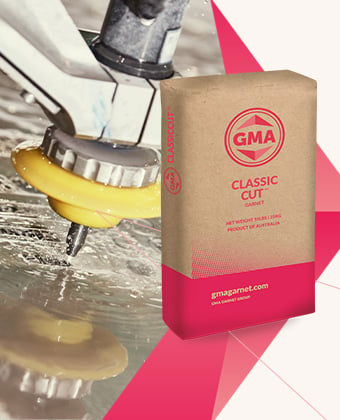You’re currently viewing the Global website.
You’re currently viewing the Global website.
Would you like to switch countries or language?Product Range
Tools & Resources
Featured products
Tools & Resources
Featured products
Tools & Resources
Resources
Categories
Types
Categories
Topics
Abrasive Blasting Case Studies Global
Enhancing Aircraft Carrier Operations: GMA ToughBlast™ MIL-SPEC approved for military specifications
Overview
Project
Surface preparation and coating application for aircraft carrier flight decks to ensure optimal traction and safety for aircraft operations.
Location
Italy
Task
Prepare flight deck surfaces that provides high adhesion and non-skid properties to meet stringent specifications for safety and performance.
Challenge
Application of a robust, corrosion-resistant coating that maintains over time and under extreme marine conditions.
Background
Historically, aircraft carriers have played a pivotal role in extending the reach of naval air power across the globe. The journey from kite experiments off HMS Pallas in 1806 to today's advanced carrier operations underscores the evolution of maritime aviation. A key challenge in this evolution has been ensuring the effective take-off and landing of aircraft on the moving and often slippery decks of these vessels.
Challenge
Aircraft carriers must facilitate rapid launch and recovery operations in all weather conditions. The flight deck's surface must provide sufficient traction for aircraft manoeuvres, preventing skids and ensuring safe operations at sea. The need for a robust, adherent, and corrosion-resistant coating on these metal flight decks is critical to meeting these operational demands.
Engineered to power through
Solution
The U.S. Navy, a leader in naval technology, has continually sought advanced solutions to optimize the performance and safety of its aircraft carriers. A significant advancement came with the development of specialized coating systems designed to provide high adhesion and non-skid properties, governed by rigorous specifications such as MIL-PRF-24667 and NAVSEA 009-32.Recognizing the importance of proper surface preparation for these coatings, IFI Srl collaborated with GMA to employ GMA ToughBlast™ for substrate preparation.
GMA Garnet industrial abrasives are qualified to MIL-22262 and prove instrumental in achieving the highest standards of surface profile demanded across projects for US Department of Defense.
GMA ToughBlast™ was chosen for its ability to create the ideal surface profile on the steel alloy decks, ensuring optimal coating adherence and longevity. This engineered blend achieves an exceptionally clean surface and high peak density, providing the desired substrate texture and durability for this application. Further, ToughBlast™ was able to grant the level of safety and efficiency of flight operations within the specified service life of the deck coatings under extreme marine conditions.
Implementation
The first deployment of this combined approach to surface preparation and coating was on an Italian aircraft carrier, which demonstrated its capability for STOVL operations of the F-35 aircraft in the USA looking forward to receiving the “full envelope recommendation” status.
The successful application on this vessel led to further applications on another Italian carrier and its aircraft hangars, following similar stringent requirements.

Nuclear ship, Military navy ship carrier full loading fighter jet aircraft and helicopter for patrol.
The image shown is for illustration purposes only.
Results
The application of GMA ToughBlast™ in the substrate preparation process has significantly contributed the operational capabilities of aircraft carriers where the non-skid efficiency is a key factor for safety of personnel and aircraft manoeuvres.
In addition, the strategic use of GMA ToughBlast™ in the preparation of aircraft carrier flight decks represents a critical advancement in maritime aviation technology, demonstrating the importance of integrating high-quality materials and precise standards in enhancing the safety and effectiveness of naval operations.
Through continued innovation and collaboration with GMA, such advancements contribute significantly to the operational readiness and capability of the world's leading naval forces.
 GMA ToughBlast™
GMA ToughBlast™ GMA SpeedBlast
GMA SpeedBlast GMA ClassicCut™ 80
GMA ClassicCut™ 80 GMA ClassicCut™ 120
GMA ClassicCut™ 120 Ilmenite
Ilmenite Pyroxene
Pyroxene